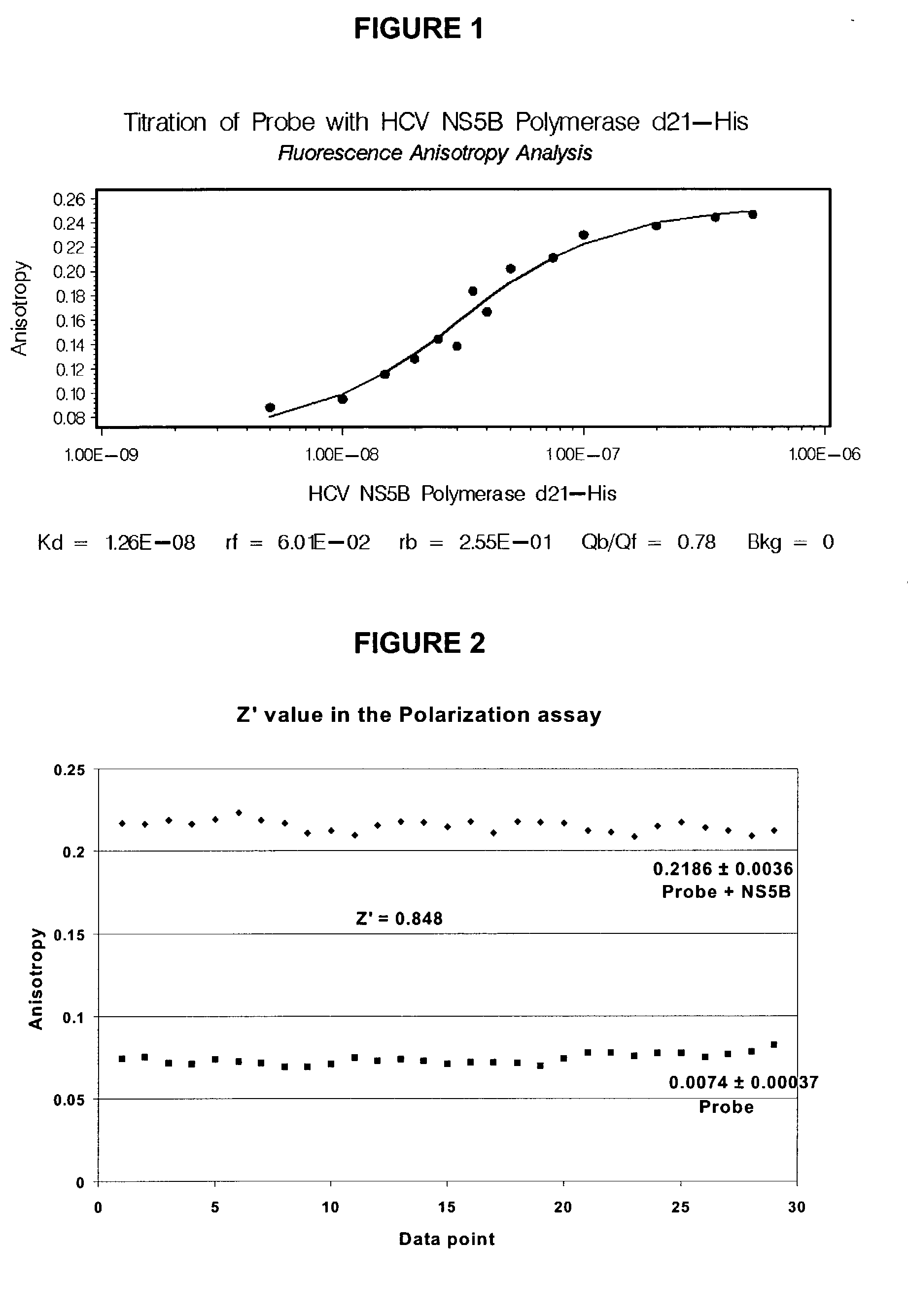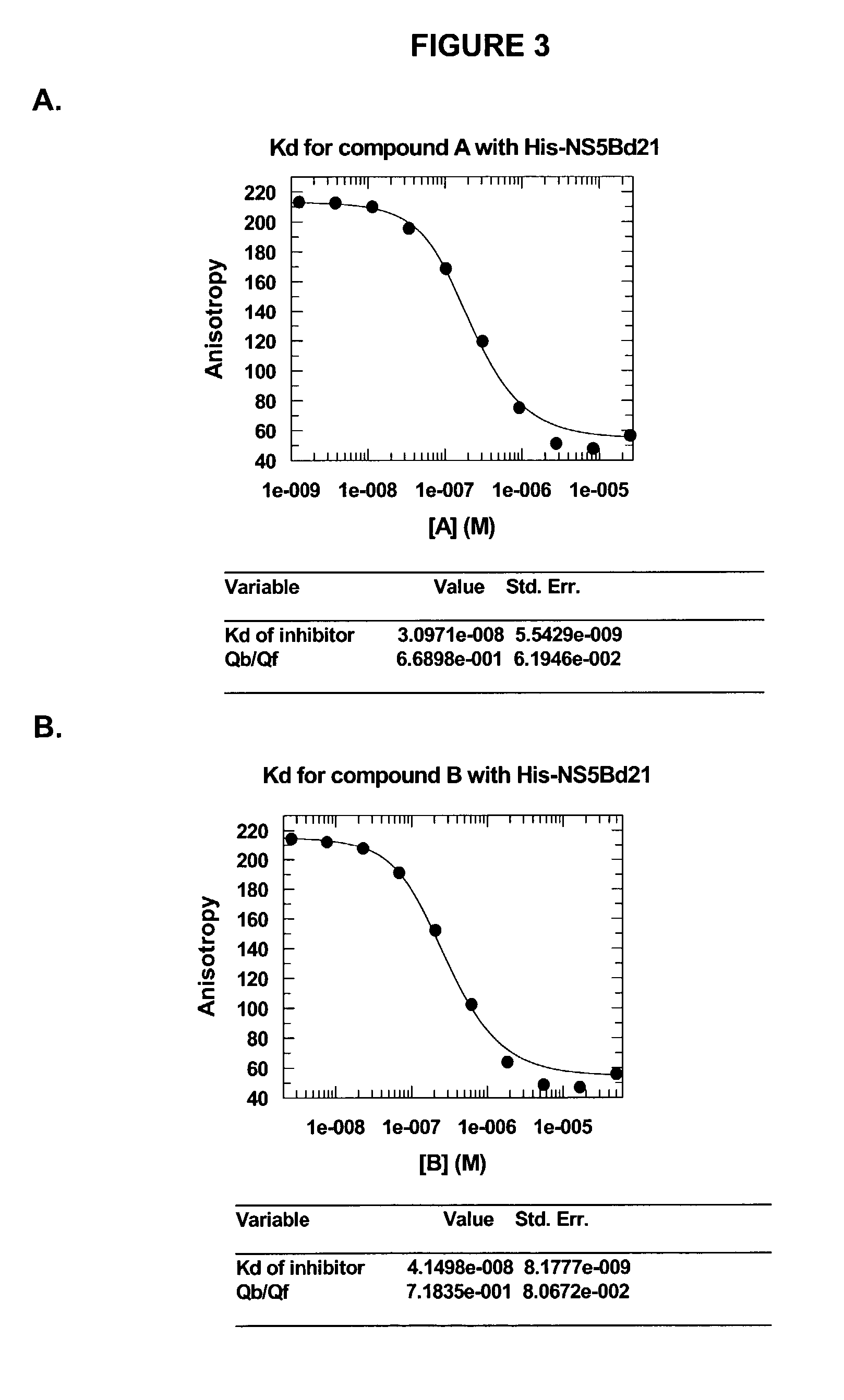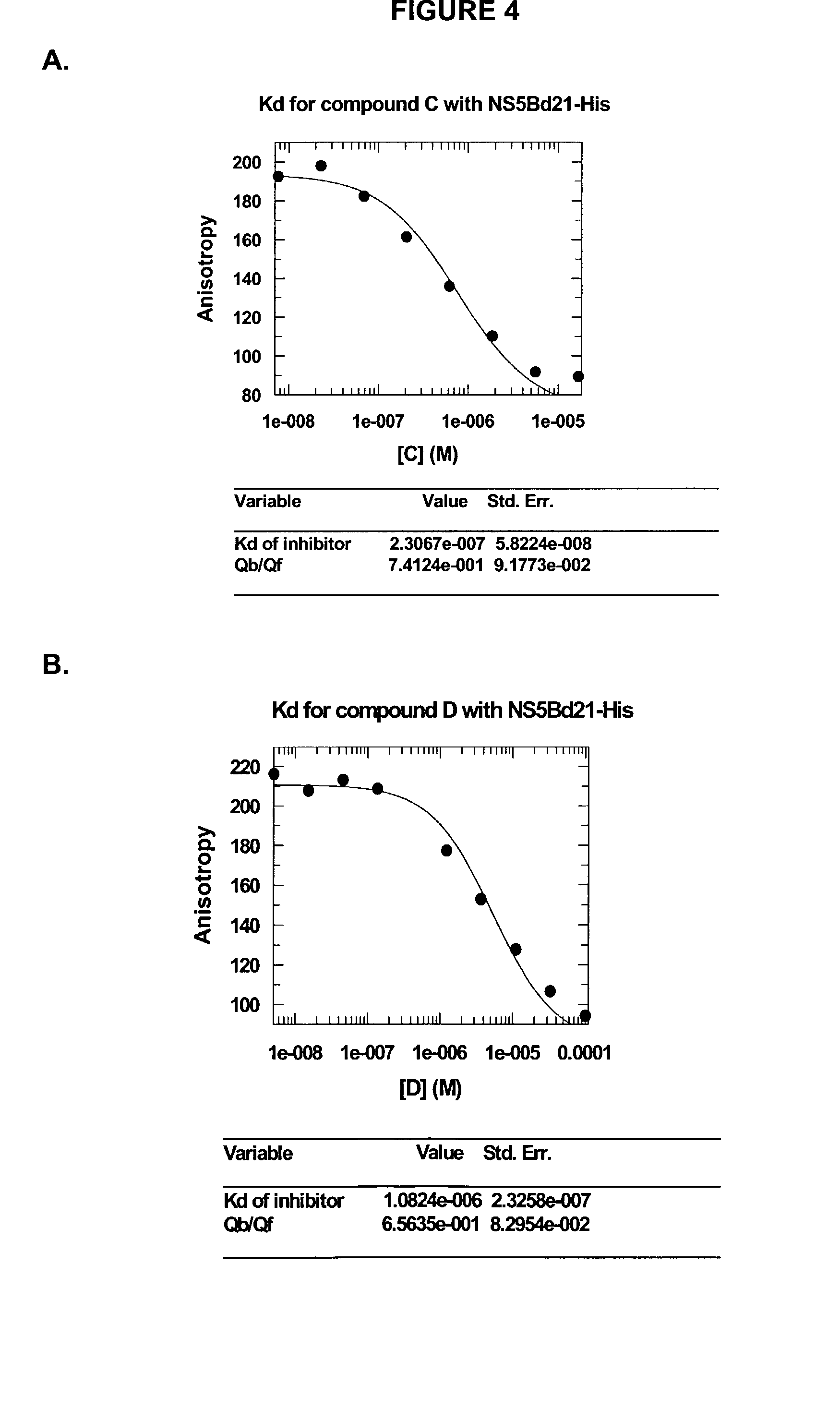Direct binding assay for identifying inhibitors of HCV polymerase
a technology of inhibitors and binding assays, applied in the field of direct binding assays for identifying inhibitors of hcv polymerase, can solve the problem of inability to determine the potency of inhibitors at various salt concentrations, and achieve the effect of high throughput and high sensitivity
- Summary
- Abstract
- Description
- Claims
- Application Information
AI Technical Summary
Benefits of technology
Problems solved by technology
Method used
Image
Examples
example 1a
probe (iii)): (S)-3-(5-Carboxymethoxy-1H-indol-3-yl)-2-({1-[1-cyclohexyl-2-(4-{[2-(5-dimethylamino-naphthalene-1-sulfonylamino)-ethylcarbamoyl]-methoxy}-phenyl)-1H-benzimidazol-5-yl]-methanoyl}-amino)-propionic acid
[0362][0363]a) 4-Chloro-3-nitrobenzoic acid (40.40 g, 0.20 mole) was suspended in DCM (100 mL) containing 3 drops of DMF. Oxalyl chloride (1.5 equivalents, 0.3 mole, 27 mL) was added in small portions and the mixture stirred overnight at room temperature. After refluxing for an additional hour to complete the reaction, volatiles were removed under reduced pressure and the residue was co-evaporated twice with hexane to give the title compound as a light yellow solid.[0364]b) (S)-5-Hydroxytryptophan methyl ester hydrochloride (1.55 g, 5 mmol) was dissolved in 80% aqueous MeCN (25 mL) and the solution cooled in ice. Sodium bicarbonate (0.850 g, 10 mmol) was added followed by di-telf-butyldicarbonate (1.10 g, 5.1 mmol). The mixture was stirred for 2 h at room temperature, pou...
example 1b
probe (ii):5-(3-{2-[2-(4-{5-[(S)-1-Carboxy-2-(5-carboxymethoxy-1-H-indol-3-yl)-ethylcarbamoyl]-1-cyclohexyl-1H-benzimidazol-2-yl}-phenoxy)-ethanoylamino]-ethyl}-thioureido)-2-(6-hydroxy-3-oxo-3H-xanthen-9-yl)-benzoic acid
[0374]
[0375]The amine salt from step h) of Example 1A (0.06 mmol) was dissolved in DMSO (0.6 mL) and DIEA (0.3 mL) was added followed by fluorescein isothiocyanate isomer 1 (0.026 g, 0.066 mmol). The mixture was stirred for 1 h at room temperature. 5N NaOH (0.3 mL) and water (0.15 mL) were added and stirring resumed for an additional 30 min. Following acidification with TFA, probe (ii) was isolated directly by preparative C1-8 reversed-phase HPLC: MS (ES+) m / z 1086 (MH+).
example 1c
probe (v): (S)-2-{[1-(2-{4-[(2-{[1-(4-Azido-phenyl)-methanoyl]-amino}-ethylcarbamoyl)-methoxy]-phenyl}-1-cyclohexyl-1H-benzoimidazol-5-yl)-methanoyl]-amino}-3-(5-carboxymethoxy-1H-indol-3-yl)-propionic acid
[0376][0377]a) 4-Azidobenzoic acid (0.160 g, 1 mmol) was dissolved in DCM (3 mL). DIEA (0.5 mL, 2.5 mmol) and TBTU (0.337 g, 1.05 mmol) were added followed by tert-butyl N-(2-aminoethyl)carbamate (0.165 g, 1.03 mmol). The mixture was stirred 2.5 h at room temperature, dissolved in EtOAc and washed sequentially with 5% aqueous K2CO3, KHSO4, water and brine. The extract was dried (MgSO4) and concentrated under reduced pressure to give a yellow solid (0.257 g). The crude carbamate (0.257 g, 0.84 mmol) was deprotected by stirring in 4N HCl—dioxane (15 mL) for 2 h at room temperature. Volatiles were removed under reduced pressure to give a pinkish solid.[0378]b) 4-Formylphenoxyacetic acid (0.200 g, 1.1 mmol) was dissolved in DCM (3 mL) and DIEA (0.5 mL) was added followed by TBTU (0.35...
PUM
| Property | Measurement | Unit |
|---|---|---|
| Fluorescence | aaaaa | aaaaa |
| Chemiluminescence | aaaaa | aaaaa |
Abstract
Description
Claims
Application Information
 Login to View More
Login to View More - R&D
- Intellectual Property
- Life Sciences
- Materials
- Tech Scout
- Unparalleled Data Quality
- Higher Quality Content
- 60% Fewer Hallucinations
Browse by: Latest US Patents, China's latest patents, Technical Efficacy Thesaurus, Application Domain, Technology Topic, Popular Technical Reports.
© 2025 PatSnap. All rights reserved.Legal|Privacy policy|Modern Slavery Act Transparency Statement|Sitemap|About US| Contact US: help@patsnap.com



